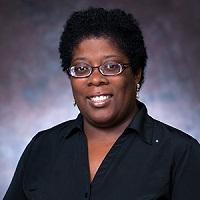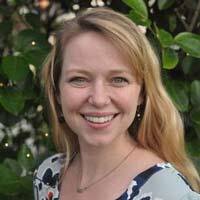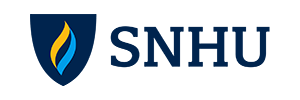Degrees Without Borders: Online Programs in Applied Statistics
The age of Big Data is here—and there’s nothing but big potential ahead.
“Big Data” means we can easily and quickly access a great deal of information from multiple databases, which can help us in our professional research and decision-making. This flow of info, for instance, can provide thorough details about customers and their buying habits, making it easier to make qualified projections about future costs and revenue expectations. The healthcare field can access information about patients, treatments, studies, medication, and other research. Sports teams can pull up all sorts of statistics about team performance and fan demographics, including what areas of the stadium have the best and worst food and drink sales.
If the right parameters are put into the right database, researchers can drill deep to discover just about anything. This power creates a few challenges, namely finding skilled individuals able to dive deep into databases to retrieve useful information and make sense of it. It takes specialized training in various methodologies, organizational software, various statistical analysis sources, and lots of practice.
Several career and educational paths have evolved within the statistics field that focus especially on working well with Big Data. Some are in the area of data science, which generally deals with making sense of available information; and others focus on statistical analysis, which can involve creating the frameworks and parameters for effective qualitative and quantitative research, a field generally referred to as applied statistics. People with training in the latter area are in especially high demand.
The ability to make sense of Big Data is already in high demand, but this trend is projected to keep on growing. The U.S. Bureau of Labor Statistics (2023) expects openings in mathematics and statistics to grow an astonishing 31 percent nationwide between 2022 and 2032, adding 10,600 jobs. Wages are also relatively high for statisticians: median pay is $99,960 annually.
Students considering useful career paths in the Big Data field or even people in the workplace now wanting to further hone their research skills can consider pursuing the educational field of applied statistics. Continue reading for information about the benefits of this path and how to get started.
Online Statistics & Data Analytics Programs
Fast Facts: Why are Statistics Skills important?
The Membership Magazine of the American Statistical Association (2022) states that the growth for statistics and biostatistics degrees continues to grow with robust growth in the number of statistics and biostatistics degrees awarded annually at the bachelor’s and master’s levels. This means that there are more opportunities to learn the basics or advanced skills at online or traditional college programs, rather than a few specialty schools that may require relocation.
Statistical knowledge will help you use the correct data collection methods, employ the correct analyses, and effectively present the results. A study on statistics will help you make discoveries in science, make decisions based on data, and make predictions. It allows you to have an in-depth understanding of a subject.
Growing Demand for Stats Skills
Employers want and need these skills. LinkedIn Learning said that a survey of LinkedIn members concluded that data analysis and programming languages processing large data sets are in the top-10 most highly sought after skills in 2023, and many companies are having challenges filling these positions.
According to LinkedIn, data analysts and data scientists are the the top ranking career for 2024. The U.S. News & World Report (2023) ranked the job of a statistician third among the best business jobs in the USA. It also ranked this position tenth among the best business jobs of 2023.
Job Flexibility
Along with working directly for an employer to gather and arrange specific data, people with statistical analysis skills may also consider the entrepreneurial route by sharing their abilities with various companies. An experienced stats consultant in such a high-demand, low-supply position can be lucrative.
Stats Experts to Know

Dr. Mosuk Chow is the director of the master of applied statistics program and a research professor of statistics at the Eberly College of Science at Penn State University. She currently teaches courses in sampling theory & methods and design & analysis of clinical trials.
Her research efforts are focused on biostatistics, sampling methods, and statistical decision theory. Her research has been published in prominent journals such as Annals of Statistics, Journal of Multivariate Analysis, and Biometrika. Professor Mosuk Chow completed her PhD and MS from Cornell University and a BS from the Chinese University of Hong Kong.

Dr. Monica Jackson’s expertise is in spatial statistics and disease surveillance. She has a blend of public and private sector experience, including a sabbatical position at the U.S. National Institutes of Health’s National Cancer Institute, where she was a mathematical statistician. She has also been a research fellow at the Statistical and Applied Mathematical Sciences Institute.
Professor Jackson has been part of the statistics faculty at American University since 2005. Her research has included examining possible links between cancer mortality rates and races. Her research has been in journals such as the Journal of Genetic Counseling, Malaria Journal, and Quality and Quantity. She completed her PhD from the University of Maryland and her MS and BS from Clark Atlanta University.

Dr. Kirsten Eilertson is an associate professor and the director of the master of applied statistics program at Colorado State University. She teaches or has taught courses such as design and data analysis for researchers, mixed models, applied biostatistics, and quantitative methods in public health.
Her research interests include the application of statistical modeling to address specific challenges. Her research has been published in Nature Neuroscience, Molecular biology and evolution, and The Lancet. She completed her PhD in statistics from Cornell University and her BA in Math from St. Olaf College.
Online Degrees in Statistics
There are plenty of options for people interested in learning more about applied statistics, including bachelor’s and master’s degree programs or professional certificates. These can be taken on campus, off-campus through distance learning, or in a hybrid of both types.
In the rapidly developing applied statistics field, candidates who have received a diploma or certificate from an established, accredited academic program, especially coursework demonstrating knowledge and competence of current software or the latest industry trends, may be more competitive in today’s job market.
Graduate programs are recommended for those who already have an aptitude or interest in working with data, but need developing better research methods. Some notable programs include:
The school’s Department of Mathematics and Statistics offers a variety of programs for students with interest in this topic, including a 120-credit bachelor’s degree in statistics with different concentrations, including applied statistics, data science, and mathematical statistics.
The curriculum includes courses such as computer science, linear algebra; probability; basic statistics; biostatistics; mathematical statistics; statistical programming in R; data science; design of experiments; and statistical machine learning, among others.
Students can also pursue a master’s degree in statistics, a combined bachelor’s degree and master’s degree in statistics, or a combined bachelor’s degree in statistics and a master’s degree in biostatistics.
The college also offers a 12-credit graduate certificate program in applied statistics that provides an overview of information collection, analysis, organization, and presentation. It includes six core credits plus six credits of electives in various statistical and analysis courses.
- Location: Washington, D.C.
- Accreditation: Middle States Commission on Higher Education (MSCHE)
- Expected Time to Completion: 24 to 48 months
- Estimated Tuition: Undergraduate ($1,856 per credit); graduate ($1,922 per credit)
University of Massachusetts, Lowell
The 120- to 126-credit bachelor of science in mathematics program with a statistics concentration offers a mix of online and on-campus courses that include a blend of math, economics, technical physics, communication, and education topics.
The math portion includes foundational concepts such as algebra, pre-calculus, and calculus, but then delves into more advanced areas such as discrete structures; applied statistics; differential equations; probability and statistics; and mathematics and computing electives. The statistics concentration includes courses such as applied statistics; linear statistics modeling and regression; and experimental design.
To be considered for admission, students must hold a high school diploma or have passed either the GED or HiSET. Students pursuing this BS in mathematics develop transferable and valuable skills in quantitative analysis, problem-solving, and critical thinking. These skills are necessary for success in various positions, such as computer programmer, statistician, financial analyst, and more.
- Location: Lowell, MA
- Accreditation: New England Commission of Higher Education (NECHE)
- Expected Time to Completion: 12 to 36 months
- Estimated Tuition: On-campus ($340 per credit); online ($380 per credit)
This fully online master of science in applied statistics program through the school’s College of Agriculture and Natural Resources provides a firm foundation in statistical theory, probability, and mathematical statistics, plus strategies for effective research model building. Students use actual data to analyze and aid in decision-making, plus how to best utilize processes like regression, experiment design, and multivariate methods. They’ll also work with various statistical analysis systems.
The 30-credit program also works closely with the school’s Department of Applied Economics and Statistics, which provides case studies and current information. Courses in this program are 100 percent online. They are led by experienced instructors who engage students in various learning activities, such as participating in online discussions, taking online quizzes and tests, and completing a range of assignments.
The curriculum explores topics such as regression analysis; applied multivariate methods; design & analysis of experiments; introduction to stat analysis; survival analysis; biostatistics; and applied database management.
To be considered for admission, candidates must have a four-year undergraduate degree or its equivalent from an accredited institution, a minimum GPA of 2.5, competence in linear algebra, advanced calculus, and basic statistics, computer programming experience, a completed graduate application form, unofficial transcripts, three letters of recommendation, a current resume, and a $75 nonrefundable application fee. GRE scores are not required for admission.
Graduates can take up roles such as biostatisticians, financial planners, compliance managers, business intelligence managers, data scientists, data analysts, and marketing analysts, among many other such roles.
- Location: Newark, DE
- Accreditation: Middle States Commission on Higher Education (MSCHE)
- Expected Time to Completion: 30 to 72 months
- Estimated Tuition: $1,028 per credit; $30,840 for the program
CSU has maintained a Department of Statistics since 1970 for students interested in research, analysis, statistical theory, probability, and methodology, generations before people started talking about online databases and Big Data. The department continues to provide foundations and research methods but has also incorporated digital methodologies and tools.
The 30-credit master’s program in applied statistics teaches effective ways to access and secure raw data and translate it into actionable insights. Students receive skills in creating regression models and learning quantitative reasoning. Students can choose to specialize in either data science or statistical science.
The curriculum includes courses such as business visual application development; statistical consulting skills; mathematical statistics with applications; quantitative reasoning; statistical learning & data mining; data visualization methods; and nonparametric methods.
Applicants to the program require a four-year bachelor’s degree from a regionally-accredited university, three semesters of calculus, at least one undergraduate-level statistics course, a course in linear algebra, and math entrance exam scores or GRE scores.
Graduates of the program can take up positions such as research scientists, quality assurance analysts, statistical programmers, data analysts, and statistical researchers. The school also offers related online graduate certificates for 10-11 credits in applications of regression models and data analysis.
- Location: Fort Collins, CO
- Accreditation: Higher Learning Commission (HLC)
- Expected Time to Completion: 12 months
- Estimated Tuition: $835 per credit
Penn State’s Eberly College of Science and Penn State World Campus have combined efforts to offer a 30-credit master of applied statistics program online or on-campus. Students learn various traditional and newer digital concepts and can advance their careers in almost every field, including science, education, technology, government, business, or health care.
Completing the program also can provide adequate information to test for the SAS Base Programming Certification Exam or seek PStat accreditation from the American Statistical Association. Some of the courses in the curriculum include an introduction to probability theory; an introduction to mathematical statistics; regression methods; analysis of variance and design of experiments; applied nonparametric statistics; statistical analysis system programming; design of experiments; and analysis of discrete data.
For admission to the program, applicants must have a baccalaureate degree from a regionally accredited U.S. institution or its equivalent, official transcripts, a minimum undergraduate grade point average of 3.0, three references, and TOEFL or IELTS scores for international students.
Students can also earn a 12-credit graduate certificate in applied statistics.
- Location: University Park, PA
- Accreditation: Middle States Commission on Higher Education (MSCHE)
- Expected Time to Completion: 24 months
- Estimated Tuition: $1,017 per credit
North Carolina State University
North Carolina State University offers an online master of statistics program. In addition to the strong fundamental understanding of statistical methods, this program will also allow students to learn the required skills needed for several job postings. Students learn about database querying using SQL, advanced linear regression and predictive modeling, creating dashboards, statistical learning techniques, and written and oral communication of statistical results and ideas.
This 30-credit program includes courses such as fundamentals of statistical inference; fundamentals of linear models and regression; applied statistical methods; big data; statistical programming; data science for statisticians; applied multivariate and longitudinal data analysis; and applied categorical data analysis, among others.
Graduates can take up positions such as biostatisticians, bioinformaticians, data analysts, data engineers, data scientists, and statisticians, among many other such roles.
North Carolina State University also offers two 12-credit graduate certificates in applied statistics, data management, and statistics education.
- Location: Raleigh, NC
- Accreditation: Southern Association of Colleges and Schools Commission on Colleges (SACSCOC)
- Expected Time to Completion: 24 months
- Estimated Tuition: $700 per credit
The University of Kansas offers several online programs in statistics. It offers an online master of science degree in applied statistics, analytics & data science; an online graduate certificate in applied statistics; and an online graduate certificate in applied data science. Students with this master’s degree can choose an emphasis: statistics, analytics, or data science.
The master’s degree comprises 30 credits, while the certificates comprise 15 credits each. The curriculum includes courses such as linear regression; multivariate statistics; SAS programming; nonparametric methods; experimental design; mathematical statistics; data mining and analytics; data visualization and acquisition; survival analysis; and statistical learning.
- Location: Overland Park, KS
- Accreditation: Higher Learning Commission (HLC)
- Expected Time to Completion: 12 to 24 months
- Estimated Tuition: $700 per credit
Southern New Hampshire University
Southern New Hampshire University offers an online bachelor of arts program in mathematics. Students develop a solid mathematical skillset, including advanced ability in mathematical methods, reasoning, and problem-solving. Graduates can take up roles such as financial analysts, operations research analysts, statisticians, financial analysts, and management analysts. Students can also add a competitive edge to their natural aptitude for math by enhancing their degree with a concentration in applied mathematics.
Made up of 120 credits, the program includes core courses such as introduction to combinatorics; mathematical proof and problem-solving; multivariable calculus; differential equations; applied linear algebra; and abstract algebra. The applied mathematics concentration includes courses such as introduction to scripting; mathematical modeling; applied statistics; and a seminar in applied mathematics.
- Location: Manchester, NH
- Accreditation: New England Commission of Higher Education (NECHE)
- Expected Time to Completion: 48 months
- Estimated Tuition: $330 per credit
Johns Hopkins University’s Whiting School Of Engineering offers an online master’s degree in applied and computational mathematics that helps students complement their knowledge with principles that can be applied to almost every discipline of engineering, science, technology, and industry. Optional focus area options include applied analysis; probability and statistics; information technology and computation; operations research; and simulation and modeling.
This ten-course program includes classes such as statistical methods and data analysis; matrix theory; probability and stochastic process; theory of statistics; advanced differential equations; multivariate statistics and stochastic analysis; computational statistics; and statistical models and regression.
- Location: Baltimore, MD
- Accreditation: Middle States Commission on Higher Education (MSCHE)
- Expected Time to Completion: 24 months
- Estimated Tuition: $6,290 per course
Oklahoma State University’s master of science program in applied statistics can be completed entirely online. This professional master’s degree emphasizes the practical application of statistical methodology and focuses less on the mathematical underpinnings associated with these techniques.
Comprising 32 credits, the program consists of two analytics courses, two experimental data analysis courses, two applied mathematical statistics courses, one computer programming with SAS and R course, a creative component capstone course, and three electives.
The curriculum includes courses such as applied regression analysis; statistical machine learning with R; statistics for experimenters; experimental design; mathematical statistics; and SAS and R programming. Electives focus on nonparametric statistics; time series analysis; and categorical data analysis.
- Location: Stillwater, OK
- Accreditation: Higher Learning Commission (HLC)
- Expected Time to Completion: 24 months
- Estimated Tuition: $489 per credit (residents); $530 per credit (non-residents)
Free (or Low-Cost) Stats Training
Being self-taught shows that a person has a strong interest in statistics and the motivation to buckle down and learn at one’s own pace outside of the structure of a traditional classroom.
The following are some programs that provide more self-directed training in statistics for a low cost:
The online education program offers more than a dozen modules in the fields of data analysis and statistics. These are taught by instructors at universities and colleges worldwide and are divided into four or five lessons that can be taken over several weeks or months. Those interested in data/statistics can hone their skills in everything from better understanding baseball scoring to modern data mining. There are strategies for better modeling and predictive sciences, plus ways to work better with different disciplines, including law.
This online educational portal provides a variety of data science-related courses, including basic statistics, which is required if you want to take inferential statistics or related methodology courses. The eight-week basic statistics program covers different ways to measure data, build mathematical relationships, and focus on probability. There are also more than a dozen other related applied statistics courses, such as qualitative and quantitative methods, statistical reasoning for public health, and clinical research.
Self-paced online classes that can be taken over several weeks or months can offer supplemental material or refresh what was learned in college. There are a variety of basic statistics and probability courses taught by instructors from various colleges, including Stanford. The content for some courses is free, but students will be charged if they want a certificate demonstrating completion.
As a final note, additional free (or reduced cost) training in statistics can be found through:





